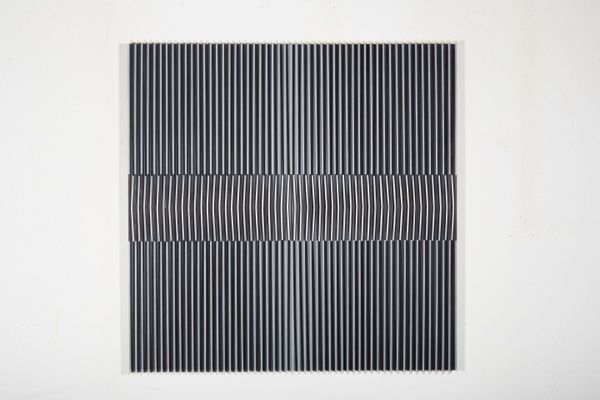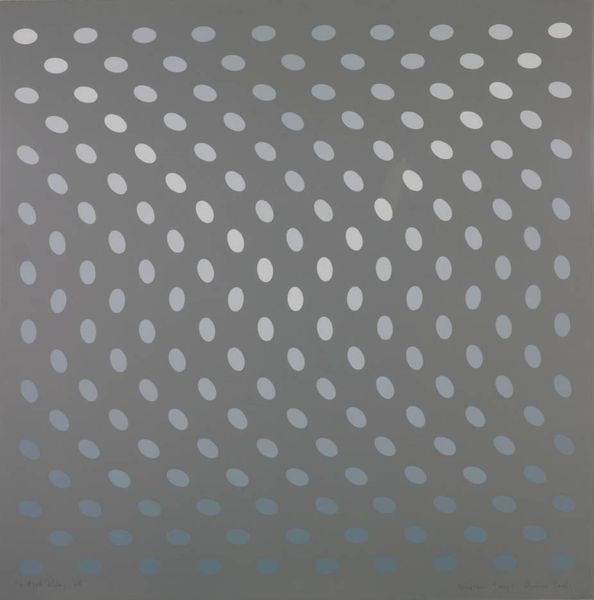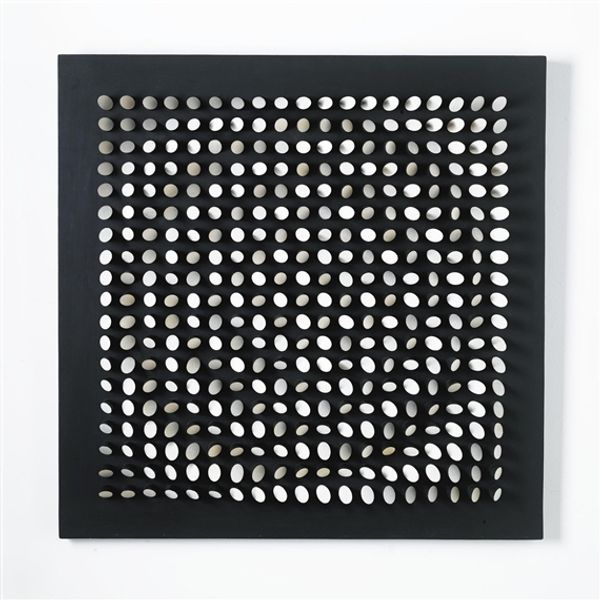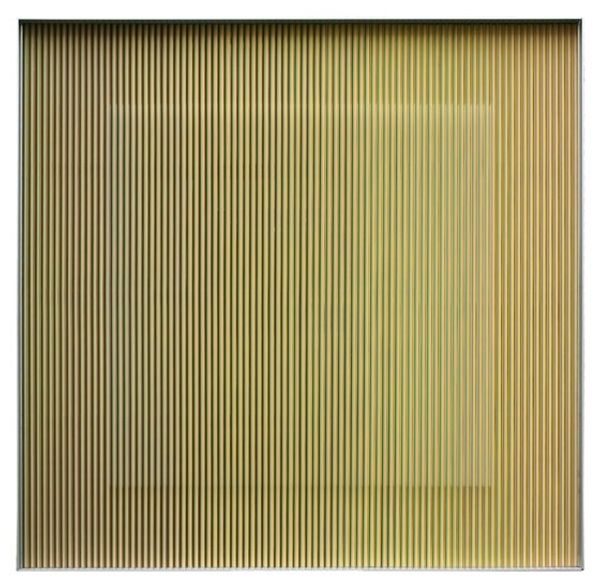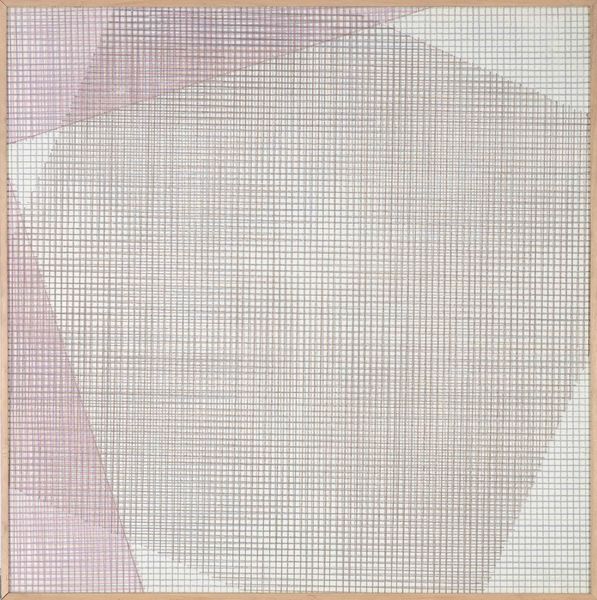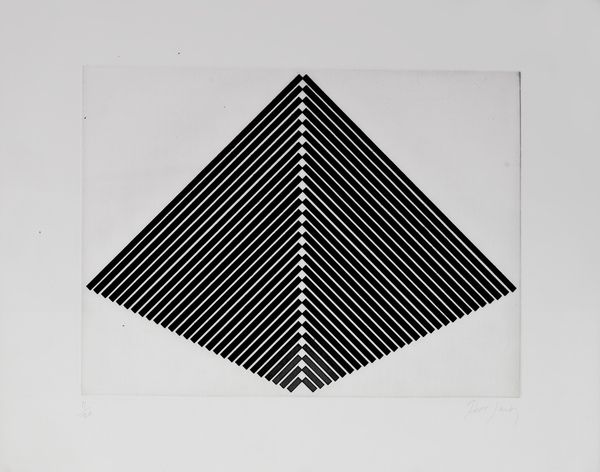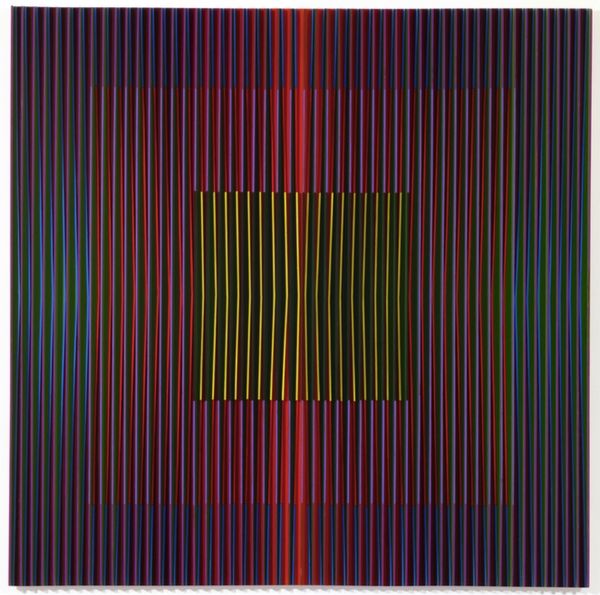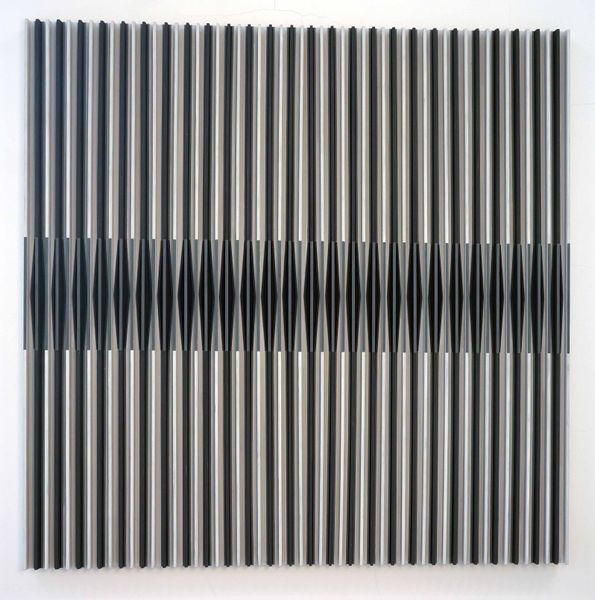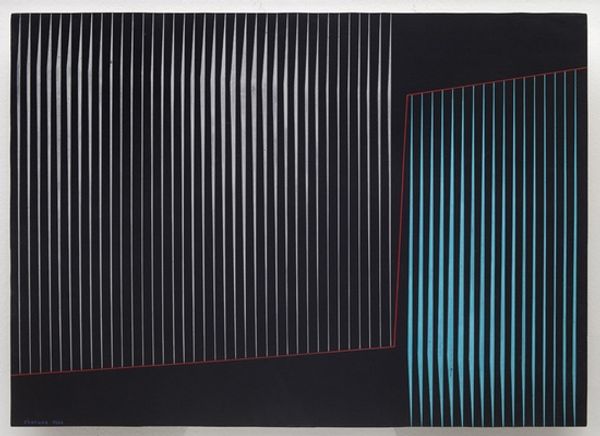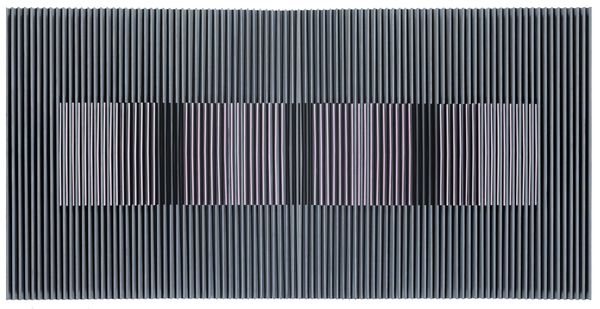
Dimensions: object: 1000 x 1000 mm
Copyright: © ADAGP, Paris and DACS, London 2014 | CC-BY-NC-ND 4.0 DEED, Photo: Tate
Curator: This is Carlos Cruz-Diez’s, Physichromie No. 113, currently residing in the Tate. Cruz-Diez, born in 1923, really made a name for himself in the realm of Op Art. Editor: It almost shimmers! The way the vertical lines interact with that central circle creates a sense of movement. I am also curious about the materials used in this piece. Curator: Cruz-Diez was fascinated by how color interacts with light and space and the social impact that can have. His Physichromies, are designed to be interactive experiences for the viewer. Editor: Interactive, definitely! It's hard to grasp at first. The ridges seem machine-made, perhaps industrially painted before assembly. Are they aluminum? The evenness suggests a high degree of technical control. Curator: Absolutely. Cruz-Diez's work challenges traditional notions of art by emphasizing the viewer's role in creating the experience. He truly democratized art. Editor: I appreciate that! Seeing how industrial processes can produce such dynamic effects makes me think about the hierarchies we often impose on art versus design. Curator: It's a reminder that art can be found in the unexpected and that its meaning is constantly evolving. Editor: Indeed, it makes you consider the means of artistic production and consumption, not just the end result.
Comments
tate 6 months ago
⋮
http://www.tate.org.uk/art/artworks/cruz-diez-physichromie-no-113-t02094
Join the conversation
Join millions of artists and users on Artera today and experience the ultimate creative platform.
tate 6 months ago
⋮
This work forms part of a series in which the Venezuelan artist Cruz-Diez demonstrates the way colour changes according to the position and movement of the viewer. He placed colours in parallel strips and at right angles, so that they seem to blend as the spectator’s viewpoint changes from one side of the work to the other. The title is a term invented by Cruz-Diez, derived from the words ‘physical chromatism’. The mirror effect was originally created using a material called lumaline, which deteriorated over time, and the work was remade by the artist in 1976 using polished stainless steel. Gallery label, July 2019
